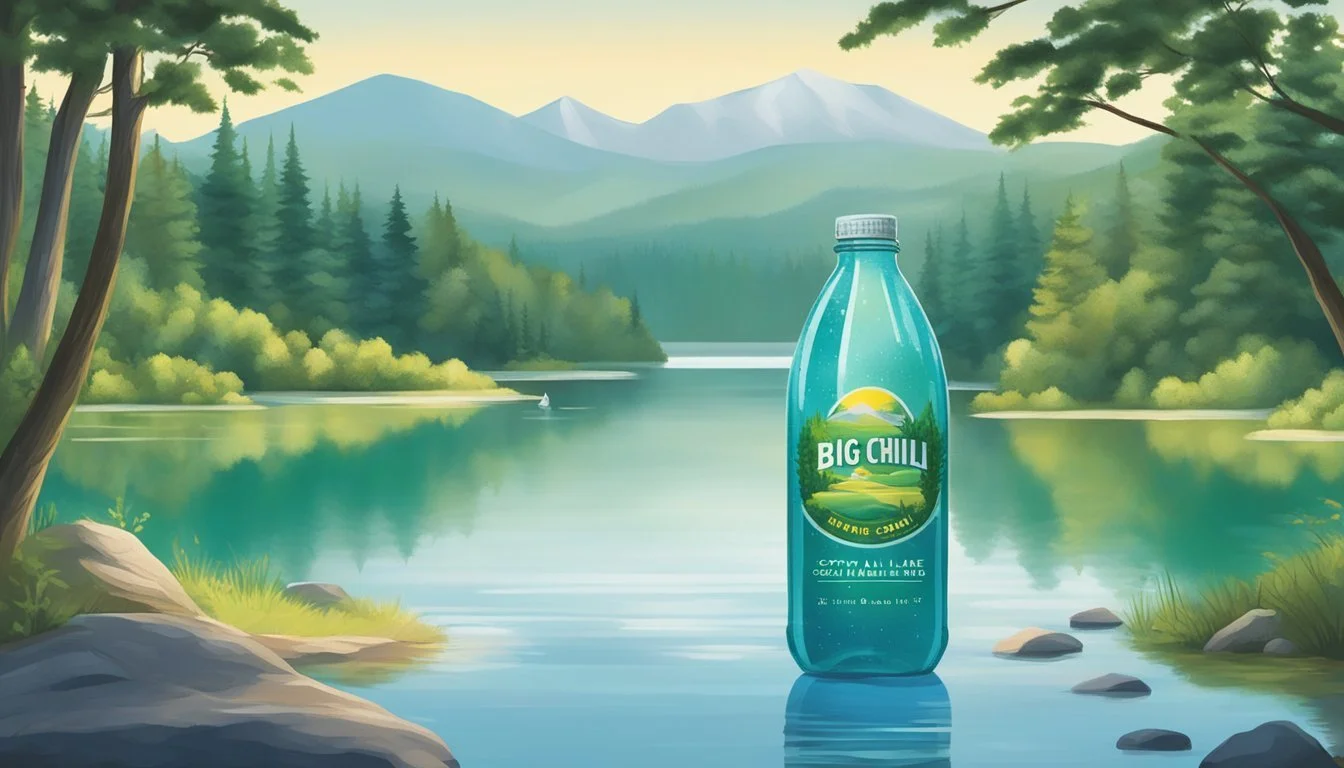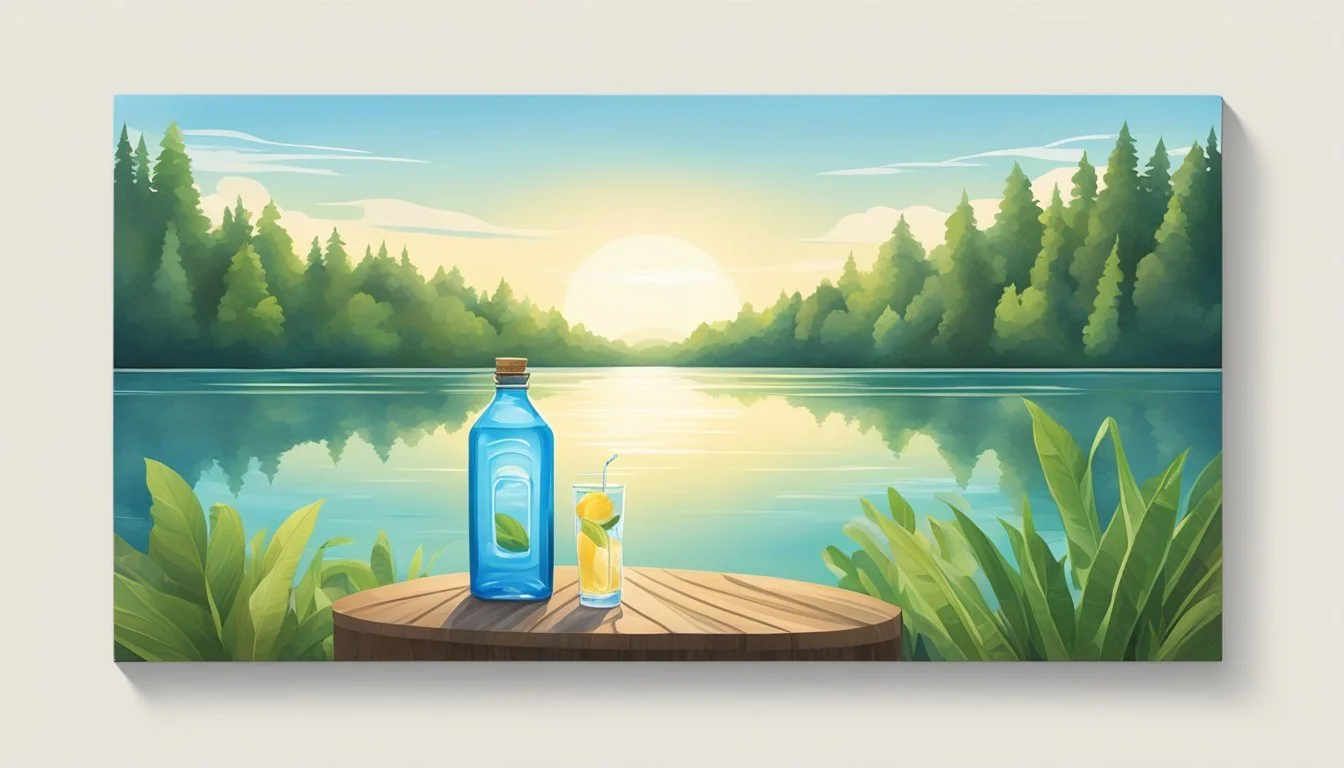Big Chill vs. Crystal Lake
Ultimate Bottled Water Comparison
In the crowded market of bottled water, consumers are often faced with an overwhelming array of choices. Among the many brands, Big Chill and Crystal Lake have distinguished themselves as popular options. Both claim purity and a refreshing taste, but which one actually delivers a superior experience?
Big Chill stands out with its crisp, clean flavor that leaves no aftertaste, making it a favorite among those who prefer a straightforward, refreshing drink. On the other hand, Crystal Lake offers a slightly sweeter profile, appealing to those who enjoy a hint of flavor in their water without any additives or artificial components.
Comparing these two brands goes beyond just taste. The sourcing, price, and corporate sustainability practices of Big Chill and Crystal Lake also play a role in determining which bottled water might be better suited to your needs. Dive in as we evaluate their characteristics and perform a head-to-head comparison to help you make an informed choice.
Background and Overview
Big Chill and Crystal Lake are two popular bottled water brands, each with unique origins and characteristics that appeal to different consumer preferences.
Origin of Big Chill
Big Chill originates from a natural spring in California, making it a true spring water brand. The water is known for its clean, crisp taste and purity, attributed to the natural filtration processes of the surrounding geological formations. Big Chill is bottled at the source, ensuring that the water retains its natural minerals and qualities.
California's natural springs are renowned for their high quality and sustainability. Big Chill benefits from this ecosystem, offering consumers a reliable and refreshing beverage. The brand prides itself on transparency, providing detailed information about its water sources and bottling practices.
Origin of Crystal Lake
Crystal Lake, on the other hand, sources its water from a renowned region in Italy. This location is famous for its mineral-rich waters, which are naturally filtered through layers of rock. The water from Crystal Lake is marketed as premium mineral water, highlighting its unique taste and health benefits.
The Italian spring from which Crystal Lake draws its water ensures that each bottle is consistent in quality. This spring water is a favorite among consumers who appreciate the slightly alkaline taste and the presence of beneficial minerals. The brand emphasizes its commitment to sustainability, using eco-friendly bottles and engaging in practices that protect the natural environment of the source.
Health and Hydration Benefits
Big Chill and Crystal Lake bottled waters offer distinct advantages in terms of hydration and added health benefits. Their varying electrolyte and mineral content plays a critical role in rehydration and overall wellness.
Hydration and Electrolyte Content
Electrolytes are essential for maintaining fluid balance and proper muscle function. Big Chill water contains added electrolytes, which can enhance hydration, especially during physical activity or hot weather. These electrolytes include sodium, potassium, and magnesium.
Sodium helps to retain water in the body.
Potassium is crucial for muscle function.
Magnesium supports muscle and nerve function.
Crystal Lake water, on the other hand, focuses on natural purity without additional electrolytes, making it suitable for those seeking a straightforward hydration solution.
Mineral Content and Health Benefits
Minerals such as calcium and magnesium have specific health benefits. Big Chill water often fortifies its product with these essential minerals.
Calcium is key for bone health.
Magnesium plays a role in energy production and muscle relaxation.
Crystal Lake water prides itself on its naturally occurring minerals, depending on its source. This natural mineral content can help support metabolic functions and maintain an overall balanced diet.
Both brands offer high-quality hydration solutions, with Big Chill adding extra electrolytes for athletic performance and Crystal Lake providing natural mineral benefits.
Water Quality and Purity
When comparing Big Chill and Crystal Lake, two critical aspects to consider are pH levels and contaminant levels. These factors greatly influence the safety and overall quality of the bottled water.
pH Levels
Big Chill and Crystal Lake have distinctive pH levels. Big Chill boasts a slightly alkaline pH around 8.2. Alkaline water is often favored for its purported health benefits, such as better hydration and neutralizing stomach acid. Crystal Lake, on the other hand, has a more neutral pH around 7.0, closely matching that of purified water typically endorsed by health experts. It's noteworthy that the Environmental Protection Agency (EPA) recommends drinking water to have a pH between 6.5 and 8.5 to ensure safety and palatability.
Contaminant Analysis
Big Chill and Crystal Lake are rigorously tested for contaminants. Big Chill has undergone comprehensive testing, showing minimal presence of heavy metals like lead and negligible levels of harmful contaminants such as PFAS. Crystal Lake similarly maintains high purity standards, employing advanced water filters to remove impurities effectively. Both brands adhere to strict safety guidelines, including those set by the EPA, ensuring the water is free from harmful substances. Consulting a registered dietitian can provide further insights into the best choice depending on individual health needs and preferences.
Taste Profile Comparison
Big Chill and Crystal Lake offer distinct taste experiences that cater to different preferences. Their unique attributes are influenced by factors like source, mineral content, and purification processes.
Flavor Characteristics
Big Chill is renowned for its clean, crisp taste with a slightly sweet undertone. The water has a neutral pH and minimal mineral content, which contributes to its smooth texture.
Crystal Lake, on the other hand, is characterized by its rich and refreshing flavor. It stems from natural springs rich in minerals, giving it a slightly earthy taste. The balanced mineral composition adds a subtle depth to its flavor profile.
In taste tests, Big Chill often appeals to those preferring a light and unobtrusive flavor, while Crystal Lake attracts those who enjoy a fuller, more robust taste.
Water Sommelier Insights
Water sommeliers highlight the importance of sourcing and mineral composition in shaping the taste profiles of Big Chill and Crystal Lake. Big Chill, sourced from protected underground reserves, offers a pure and straightforward drinking experience, often likened to the smoothness found in high-grade tap water.
Crystal Lake, sourced from alpine springs, contains naturally occurring electrolytes that enhance its refreshing quality. This makes it an excellent choice for hydration and taste enthusiasts who look for nuanced flavors.
Experts also note the texture differences; Big Chill's low mineral content results in a lighter mouthfeel, whereas Crystal Lake's higher mineral content provides a creamy texture. This complexity appeals to those seeking diversity in their water experiences.
Environmental and Ethical Considerations
When comparing Big Chill and Crystal Lake, it's essential to examine their environmental and ethical impacts. This includes evaluating the materials used for bottles and the sustainable practices each brand adopts.
Bottle Materials and Environmental Impact
Big Chill primarily uses plastic bottles, which are widely known for their significant environmental footprint. Plastic production, disposal issues, and pollution are key concerns. Recycling rates for plastic bottles are relatively low, exacerbating the problem.
Crystal Lake, on the other hand, offers options in plastic, glass, and boxed water. Glass bottles have a higher recycling rate and are more environmentally friendly. Boxed water, made from renewable resources, is another eco-friendly alternative, reducing reliance on plastic and lowering overall environmental impact.
Sustainable Practices and Ethical Sourcing
Big Chill has made efforts to incorporate recycled materials into their plastic bottles, aiming to reduce their environmental impact. However, there is limited information on their broader sustainability initiatives. Ethical sourcing practices are not prominently highlighted by the brand.
Crystal Lake emphasizes ethical sourcing and sustainable practices. They source their water responsibly from natural springs with minimal environmental disruption. Additionally, the company is committed to reducing carbon emissions by using renewable energy in its bottling facilities. Adopting such practices illustrates a stronger commitment to the environment.
Brand Comparison and Consumer Perception
Big Chill and Crystal Lake are widely recognized bottled water brands, each with distinct market presences and reputations among consumers.
Market Presence and Availability
Big Chill is known for its extensive distribution network. It is readily available in most grocery stores and has a significant market share, especially in urban areas.
Crystal Lake, on the other hand, has a more niche market presence. It is often found in health food stores and premium retailers, catering to a specific demographic that prefers high-end bottled water.
Despite differing strategies, both brands have managed to secure strong footholds. Big Chill's availability makes it a convenient choice, while Crystal Lake appeals to consumers seeking quality and exclusivity.
Consumer Reviews and Brand Reputation
Consumer reviews for Big Chill are generally positive. Many appreciate its affordability and reliability. It is often cited in reviews for its consistent taste and widespread availability. However, some consumers mention a lack of unique flavor compared to premium brands.
Crystal Lake, praised for its purity and refined taste, holds a different reputation. Reviews often highlight the clean, crisp quality of the water, with some noting a slight mineral aftertaste that is considered a mark of high quality. Although more expensive, it is preferred by those who prioritize taste and source quality.
Both brands have built loyal customer bases, emphasizing different aspects of consumer satisfaction—from convenience and availability to quality and exclusivity.
Pricing and Value
Big Chill and Crystal Lake both offer distinct pricing strategies that cater to different market segments, making it important to consider cost and value for money when choosing between the two brands.
Cost Analysis
Big Chill is positioned at a mid-range price point, typically costing around $1.50 per bottle for a standard 500ml size. Bulk purchasing options are available, with 24-packs averaging about $30.
Crystal Lake, on the other hand, is marketed as a premium product. Individual bottles can cost upwards of $2.50, and 24-packs often exceed $50.
Crystal Lake justifies this higher price through its marketing as a superior product, available in glass bottles rather than plastic, adding to perceived quality. Factors such as source purity and bottling process also contribute to its elevated cost.
Comparing Value for Money
When evaluating value for money, Big Chill provides an affordable option for daily consumption without sacrificing quality. Its plastic bottles are convenient for on-the-go hydration, and bulk purchases offer economic benefits for budget-conscious consumers.
Crystal Lake, while more expensive, offers a premium experience. The use of glass bottles aligns with sustainability trends and a market preference for eco-friendly packaging.
The higher cost is often justified by its enhanced marketing as a purer and more elite product, making it a preferred choice for special occasions or for those willing to pay more for perceived quality.
Both brands cater to different economic factors and consumer preferences, making the choice between them dependent on individual needs and values regarding cost and overall drinking experience.







